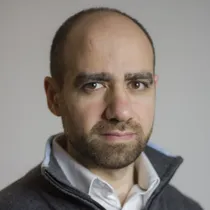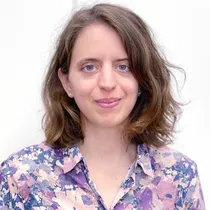Presentation



©copyright MATHIEU COPPEY ©copyright BASSAM HAJJ
Our goal is to discover and study the physical principles underlying biological functions such as cell polarity and migration, signaling, nuclear organization or gene expression. Our approach consists of quantifying and perturbing the organization and dynamics of cellular constituents from molecular to cellular scales using advanced light microscopy. We develop cutting edge optical microscopy approaches in combination with advanced data analysis and visualization tools.
If you are interested in an internship or a post-doc please send us your request by email to: mathieu.coppey@curie.fr and/or bassam.hajj@curie.fr
In recent decades, a large number of interactions between molecules in the cell have been mapped, revealing a gigantic molecular circuitry. However, such a mapping is not sufficient to understand the emergence of cellular functions. Indeed, all functions result from the coordination in time and space of multiple processes such as the transport of molecules by diffusion, transient assemblies, molecular organization or maintenance of inhomogeneous spatial distributions
In order to identify the minimal physicochemical processes involved in cellular functions, we are using and developing quantitative imaging and light-based perturbation tools on living cells. Combining state of the art 3D super-resolution and advanced image processing algorithms with innovative visualization, e.g. use of virtual reality to explore single-molecule localization data, our quantitative approach allows us to discover new cellular structures as well as characterize their dynamics. For example, using single molecule imaging, we were able to discover that the transmission of biochemical signals in the cell occurs collectively via nano-aggregates of a few dozen proteins. We combine this approach with physical modeling and optogenetic tools that induce biochemical reactions with light at a specific location in the cell. We were able to show, for example, how the spatial extension of molecular gradients controls the migration of a cell. This causal approach allows us to directly see the effect of a physicochemical process on the behavior of the cell.
Current projects:
Our group develops innovative optical methods for biological imaging. In the last years, we have focused on techniques for fast and sensitive 3D imaging. We have in particular implemented novel approaches based on adaptive optics and multifocus microscopy for super-resolution imaging and single-molecule tracking in living cells. These optical methods are complemented with efficient computational techniques for the processing and visualization of single molecule data.
Target search of DNA-binding proteins
DNA-binding proteins need to bind short specific sequences within a large competing pool of non-specific sequences. It is thus necessary to identify the mechanisms by which they rapidly find their target. We have developed Imaging assays to directly track the motion of individual transcription factors in the nucleus of live eukaryotic cells.
Optogenetic manipulation of cell migration and polarity
The functional response of a cell relies on the coordinated dynamics of a network of interacting molecules that is able to process the information of internal or environmental cues. It is thus essential to develop experimental methods to probe at a systems-level the spatial organization, the connectivity, and the kinetics of these networks. In contrast to biochemical, pharmacological, or genetic tools that permanently and uniformly affect the biological systems, our goal is to perturb the cell in a temporally – and spatially- controlled manner and to optically record its response. To this end, we are implementing novel assays to manipulate intracellular signaling using optogenetic stimulation. This method is used to probe mechanisms governing cell polarization during migration or division.


















 Eureca PhD - 1 september 2022
Eureca PhD - 1 september 2022







